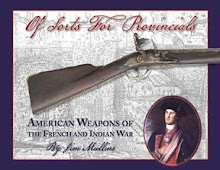An original 18th century linen wallet marked "CD" in red thread. Private Collection
From the Cries of Dublin ca. 1760
Quite a few references can be found in the Virginia Gazette:
http://etext.virginia.edu/etcbin/ot2www-costa?specfile=%2Fweb%2Fdata%2Fusers%2Fcosta%2Fcosta.o2w&query=wallet&docs=record&begin_year=&end_year=&sample=1-100&grouping=work
http://docsouth.unc.edu/nc/byrd/byrd.html
William Byrd (1674-1744)
Containing the History of the Dividing Line Betwixt Virginia and North Carolina;
A Journey to the Land of Eden, A. D. 1733; and A Progress to the Mines.
Written from 1728 to 1736, and Now First Published:
c1728
12th. Before we marched this morning, every man took care to pack up some buffalo steaks in his wallet, besides what he crammed into his belly.
http://books.google.com/books?id=HWTOAAAAMAAJ&q=pair+of+mockasheens&dq=pair+of+mockasheens&hl=en&ei=wl9uTZSXPIWglAfboaV4&sa=X&oi=book_result&ct=result&resnum=1&ved=0CD4Q6AEwAA
Executive journals of the Council of colonial Virginia 1757
"...every man should have a wallet of Oznabrigs to carry his provisions in when the leave their horses at the passes of the mountains, and two pair of mockasheens, that blankets would be wanted and clasp knives, thread for the linen and woolen bags for transporting the powder when taken from the waggons..."
NC Gazette via Va Gazette Newburn, May 24, 1771
Carolina "Regulator" baggage: "consisting of hunting shirts, wallets of dumplings, jackets, breeches, powder-horns, shot-bags, & c. were taken with a number of horses..."
The Journal of William Calk, Kentucky Pioneer
Lewis H. Kilpatrick
The Mississippi Valley Historical Review, Vol. 7, No. 4. (Mar., 1921), pp. 363-377.
thursd 30 we Set out again & went down to Elk gardin and there Suplid our Selves With Seed Corn & irish tators then we went on alittle way I turnd my hors to drive afore me & he got Scard Ran away threw Down the Saddel Bags & Broke three of our powder goards & Abrams flask Burst open a walet of corn...
Wallets were also mentioned by Ensign Robert Campbell on the King's Mountain campaign.
A good intro and pattern info can be found here:
via wayback link
Interior view of the original "CD" marked wallet (also shown at the top of the page) turned inside out. Note the neatly butted selvedge edges that were sewn together then whipped down and the rolled and whip stitched 18 inch slit opening at top.
The original wallet at the top of this page is made of approximately 27 inch wide heavy coarse half bleached linen. A lot of the utilitarian linen in the 18th century was fairly narrow in width, which explains the construction method used here. If you cannot find 26-30" wide linen you can always cut down wider stuff. The selvedge edges are butted together to make the long seam along the top and then whipped down. The 18 inch long oval opening slit on the top has had the edges rolled/folded and then whip stitched down in the wallet's interior. The final size is 13.75"s wide by 44 inches long.
Another similar wallet in the Cumberland County (PA) Historical Society collection is described by Tandy & Charles Hersch in Cloth & Costume as of bleached linen, plain woven (34 warp 32 weft). That wallet is 15.5 wide x 39 inches long with a 16.5 inch opening and flat felled seams. From written descriptions and images it seems that sizes varied greatly in the period.
For this repro, I picked up some off white plain woven stout linen from Burnley and Trowbridge a while back.
After washing, the linen was cut to size, and I pinned down the long seam (remember to leave the space for the opening!).
Sew that together with a back stitch, fold over the edges and flat fell if you don't have both of the selvedges to butt together. I suggest a rolling hem or flat felling the opening slit.
Then the short ends are pinned together (remember the opening slit goes in the middle of the top of the rectangle).
Sew them together, then fell the seam as before, repeat on the other end.
Once there, the wallet is finished!
Another can be found here:










